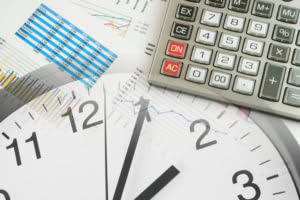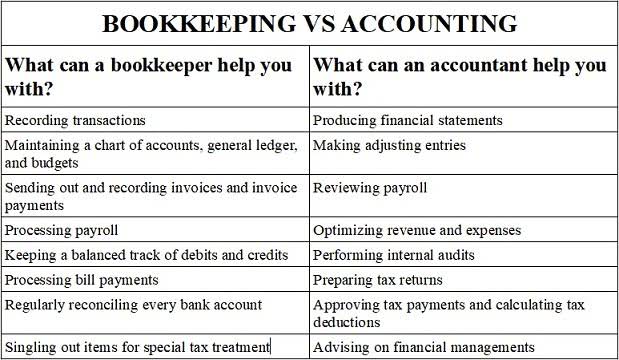
Salvage value can sometimes be merely a best-guess estimate, or it may be specifically determined by a tax or regulatory agency, such as the Internal Revenue Service (IRS). The salvage value is used to calculate year-to-year depreciation amounts on tangible assets and the corresponding tax deductions that a company is allowed to take for the depreciation of such assets. The salvage value is used to determine annual depreciation in the accounting records, and the salvage value is used to calculate depreciation expense on the tax return. Under accrual accounting, the cost of purchasing PP&E like machinery and equipment – i.e. capital expenditures (Capex) – is expensed on the income statement and spread out across the useful life assumption.
Great! The Financial Professional Will Get Back To You Soon.
However, you may choose a depreciation method that roughly matches how the item loses value over time. Book value is the historical cost of an asset less the accumulated depreciation booked for that asset to date. This amount is carried on a company’s financial statement under noncurrent assets. On the other hand, salvage value is an appraised estimate used to factor how much depreciation to calculate.

Why You Can Trust Finance Strategists

Adam Hayes, Ph.D., CFA, is a financial writer with 15+ years Wall Street experience as a derivatives trader. Besides his extensive derivative trading expertise, Adam is an expert in economics and behavioral finance. Adam received his master's in economics from The New School for Social Research and his Ph.D. from the University of Wisconsin-Madison in sociology. He currently researches and teaches economic sociology and the social studies of finance at the Hebrew University in Jerusalem. This means that not only https://www.bookstime.com/ do they get to utilize the asset over its useful life, they also get to recover funds for the asset when they are done using it. A lease buyout is an option that is contained in some lease agreements that give you the option to buy your leased vehicle at the end of your lease.
How Small Business Accountants Use Salvage Value
To appropriately depreciate these assets, the company would depreciate the net of the cost and salvage value over the useful life of the assets. If the assets have a useful life salvage value formula of seven years, the company would depreciate the assets by $30,000 each year. Both declining balance and DDB require a company to set an initial salvage value to determine the depreciable amount.
Depreciation Formula

The salvage or the residual value is the book value of an asset after all the depreciation has been fully expired. By the end of the PP&E’s useful life, the ending balance should be equal to our $200k assumption – which our PP&E schedule below confirms. The beginning balance of the PP&E is $1 million in Year 1, which is subsequently reduced by $160k each period until the end of Year 5.
Depreciation measures an asset's gradual loss of value over its useful life, measuring how much of the asset's initial value has eroded over time. For tax purposes, depreciation is an important measurement because it is frequently tax-deductible, and major corporations use it to the fullest extent each year when determining tax liability. To determine the residual value of an asset, you must consider the estimated amount that the asset's owner would earn by selling the asset (minus any costs that might be incurred during the disposal). Residual value and resale value are two terms that are often used when discussing car-purchasing and leasing terms.
Double Declining Balance (DDB) Method
The declining balance method is a type of accelerated depreciation used to write off depreciation costs earlier in an asset's life and to minimize tax exposure. With this method, fixed assets depreciate more so early in life rather than evenly over https://www.facebook.com/BooksTimeInc/ their entire estimated useful life. There are four allowable methods for calculating depreciation, and which one a company chooses to use depends on that company's specific circumstances. Small businesses looking for the easiest approach might choose straight-line depreciation, which simply calculates the projected average yearly depreciation of an asset over its lifespan. Since different assets depreciate in different ways, there are other ways to calculate it.
- Take a look at similarly equipped 2015 Hyundai Elantras on the market and average the selling prices.
- The percentage of cost method multiplies the original cost by the salvage value percentage.
- A business owner should ignore salvage value when the business itself has a short life expectancy, the asset will last less than one year, or it will have an expected salvage value of zero.
- Annual depreciation is derived using the total of the number of years of the asset's useful life.
- Understanding salvage value aids in making informed investment and asset management decisions.
- In the example, the machine costs $5,000, has a salvage value of $1,000, and a 5-year life.
- To determine the residual value of an asset, you must consider the estimated amount that the asset's owner would earn by selling the asset (minus any costs that might be incurred during the disposal).
In general, the salvage value is important because it will be the carrying value of the asset on a company’s books after depreciation has been fully expensed. It is based on the value a company expects to receive from the sale of the asset at the end of its useful life. In some cases, salvage value may just be a value the company believes it can obtain by selling a depreciated, inoperable asset for parts. Then, it can calculate depreciation using a method suited to its accounting needs, asset type, asset lifespan, or the number of units produced. Companies have several options for depreciating the value of assets over time, in accordance with GAAP. Thus, the methods used in calculating depreciation are typically industry-specific.

